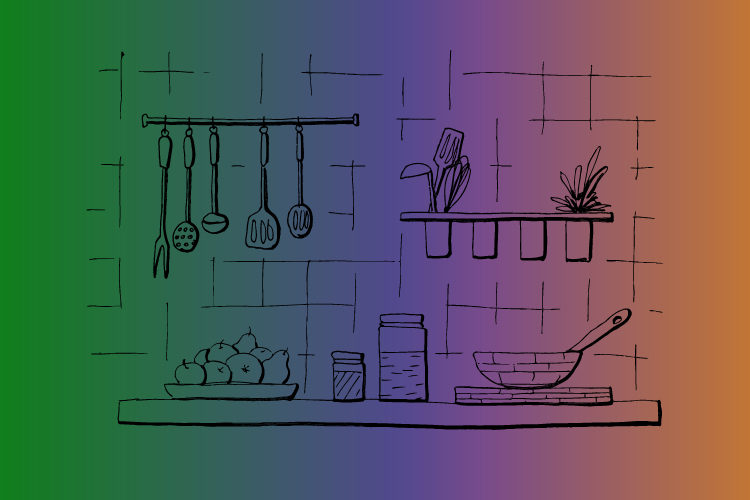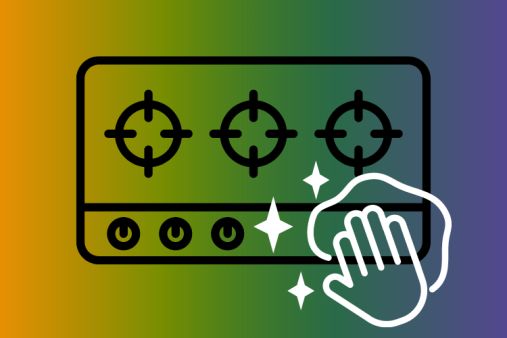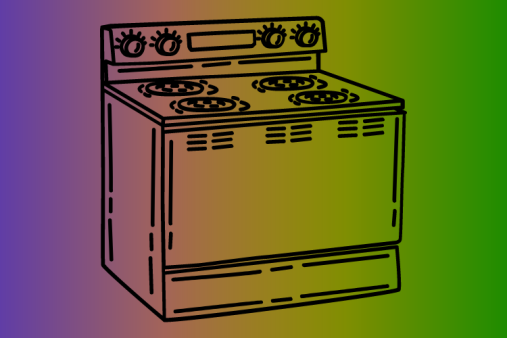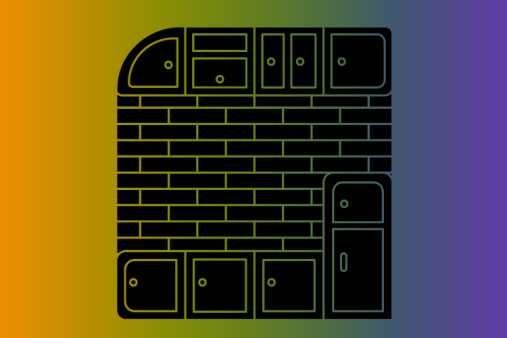There are several different types of worktops that are commonly used in kitchens and other workspaces. Here are some of the most popular options:
-
Laminate worktops: These are made from layers of paper or fabric that have been impregnated with resin and bonded together under high pressure. They are affordable, easy to clean, and come in a wide range of colors and patterns.
-
Solid surface worktops: These are made from a solid, non-porous material such as acrylic or polyester. They are durable, easy to clean, and can be shaped and formed into various designs.
-
Granite worktops: These are made from natural stone and are extremely durable and heat-resistant. They are available in a range of colors and patterns, and are a popular choice for high-end kitchens.
-
Quartz worktops: These are made from crushed quartz mixed with resin and pigment. They are durable, heat-resistant, and come in a range of colors and patterns.
-
Wood worktops: These are made from solid wood, such as oak or maple. They are warm and inviting, and can be sanded and refinished to remove scratches and stains.
-
Stainless steel worktops: These are made from a durable, non-porous material that is easy to clean and resistant to heat and stains. They are a popular choice for commercial kitchens and modern homes.
-
Glass worktops: These are made from tempered glass and can be back-painted in a range of colors. They are easy to clean and offer a sleek, modern look.
These are just a few of the most popular types of worktops, and there are many other options available depending on your budget, style, and functional requirements.
Laminate worktops
Laminate worktops are a popular choice for kitchens due to their affordability, durability, and ease of maintenance. Here are some advantages and disadvantages of laminate worktops to consider:
Advantages:
- Affordable: Laminate worktops are one of the most affordable options for kitchen worktops.
- Variety: They are available in a wide variety of colors and patterns, making it easy to find a style that matches your kitchen décor.
- Durability: Laminate worktops are durable and can withstand daily wear and tear, making them a good choice for busy kitchens.
- Easy to clean: They are easy to clean and maintain with a damp cloth and mild detergent.
- Resistant to stains: Laminate worktops are resistant to stains from food and drink spills, which can easily be wiped clean.
Disadvantages:
- Prone to scratches: Laminate worktops can scratch easily and are not scratch-resistant.
- Limited heat resistance: Laminate worktops are not as heat-resistant as some other materials, such as granite or quartz, and can be damaged by hot pans or dishes.
- Not as durable as other materials: While laminate worktops are durable, they are not as long-lasting as some other materials such as granite or quartz.
- Water damage: Laminate worktops can be damaged by water if the edges are not properly sealed, which can cause the material to swell and bubble.
Overall, laminate worktops are a good choice for those on a budget who want a durable and low-maintenance worktop option. However, they may not be the best choice for those who prioritize scratch resistance or heat resistance.
Solid surface worktops
Solid surface worktops are a popular choice for kitchens due to their versatility, durability, and ease of maintenance. Here are some advantages and disadvantages of solid surface worktops to consider:
Advantages:
- Versatility: Solid surface worktops can be shaped and formed into various designs, making them a good choice for kitchens with unique or complex layouts.
- Seamless: Solid surface worktops can be installed seamlessly, creating a sleek and modern look.
- Durable: They are durable and resistant to scratches, stains, and heat, making them a good choice for busy kitchens.
- Easy to clean: Solid surface worktops are easy to clean and maintain with a damp cloth and mild detergent.
- Non-porous: They are non-porous and do not absorb water, which makes them hygienic and resistant to bacteria growth.
Disadvantages:
- Cost: Solid surface worktops can be expensive, especially compared to laminate or wood worktops.
- Can scratch: While solid surface worktops are generally resistant to scratches, they can still scratch if subjected to enough force or abrasion.
- Limited heat resistance: While they are generally heat-resistant, solid surface worktops can be damaged by hot pans or dishes, and are not as heat-resistant as some other materials, such as granite or quartz.
- Can discolor: Solid surface worktops can discolor over time due to exposure to sunlight or chemicals.
Overall, solid surface worktops are a good choice for those who want a versatile, durable, and easy-to-maintain worktop option. However, they may not be the best choice for those who prioritize heat resistance or are working with a limited budget.
Granite worktops
Granite worktops are a popular choice for kitchens due to their durability, natural beauty, and heat resistance. Here are some advantages and disadvantages of granite worktops to consider:
Advantages:
- Durability: Granite is one of the hardest natural stones and is extremely durable, making it a good choice for busy kitchens.
- Heat resistant: Granite worktops are heat resistant and can withstand hot pans and dishes without being damaged.
- Natural beauty: Granite is a natural stone and comes in a wide range of colors and patterns, making it a popular choice for high-end kitchens.
- Easy to clean: Granite worktops are easy to clean and maintain with a damp cloth and mild detergent.
- Adds value to home: Granite worktops are a popular choice among home buyers and can add value to your home.
Disadvantages:
- Cost: Granite worktops can be expensive, especially compared to laminate or solid surface worktops.
- Requires sealing: Granite worktops need to be sealed regularly to prevent stains and bacteria growth.
- Heavy: Granite worktops are heavy and may require additional support during installation.
- Prone to chipping and cracking: While granite is durable, it can still chip or crack if subjected to enough force or impact.
- Limited design options: The natural beauty of granite means that the design options are limited to what is available in nature.
Overall, granite worktops are a good choice for those who want a durable and natural worktop option with a high-end look. However, they may not be the best choice for those who are working with a limited budget or prioritize design flexibility.
Quartz worktops
Quartz worktops are a popular choice for kitchens due to their durability, low maintenance, and wide range of design options. Here are some advantages and disadvantages of quartz worktops to consider:
Advantages:
- Durability: Quartz worktops are extremely durable and can withstand daily wear and tear, making them a good choice for busy kitchens.
- Low maintenance: They are easy to clean and maintain with a damp cloth and mild detergent, and do not require regular sealing like some other materials.
- Non-porous: Quartz worktops are non-porous and do not absorb water, making them hygienic and resistant to bacteria growth.
- Wide range of design options: Quartz worktops are available in a wide range of colors and patterns, including options that mimic the look of natural stone like marble or granite.
- Heat resistant: Quartz worktops are heat resistant and can withstand hot pans and dishes without being damaged.
Disadvantages:
- Cost: Quartz worktops can be expensive, especially compared to laminate or solid surface worktops.
- Can be prone to chipping and cracking: While quartz is a durable material, it can still chip or crack if subjected to enough force or impact.
- Limited design flexibility: While quartz worktops offer a wide range of design options, the pattern and color options are limited to what is available from the manufacturer.
- Can be prone to discoloration: While quartz is generally resistant to stains, certain liquids like wine or coffee can cause discoloration if not cleaned up promptly.
- Cannot be used outdoors: Quartz worktops are not suitable for outdoor use as they are not UV-resistant.
Overall, quartz worktops are a good choice for those who want a durable and low-maintenance worktop option with a wide range of design options. However, they may not be the best choice for those who prioritise design flexibility or are working with a limited budget.
Wood worktops
Wood worktops are a classic choice for kitchens due to their natural beauty and warmth. Here are some advantages and disadvantages of wood worktops to consider:
Advantages:
- Natural beauty: Wood worktops offer a warm, natural look that can add character and charm to a kitchen.
- Can be sanded and refinished: Unlike other materials, wood worktops can be sanded and refinished to remove scratches and stains.
- Can be custom cut and shaped: Wood worktops can be custom cut and shaped to fit any kitchen layout or design.
- Adds value to home: Wood worktops are a popular choice among home buyers and can add value to your home.
- Easy to work with: Wood worktops are easy to work with and can be cut and shaped on site.
Disadvantages:
- Requires regular maintenance: Wood worktops require regular oiling or sealing to prevent water damage and maintain their natural beauty.
- Can be prone to scratches and stains: Wood worktops can scratch and stain easily, especially if not properly maintained.
- Can be susceptible to water damage: Wood worktops are not as water-resistant as other materials and can be damaged by standing water.
- Susceptible to heat damage: Wood worktops are not as heat-resistant as other materials and can be damaged by hot pans or dishes.
- Cost: Wood worktops can be expensive, especially if using a high-quality hardwood like maple or walnut.
Overall, wood worktops are a good choice for those who want a natural and warm worktop option with a lot of character. However, they require regular maintenance and may not be the best choice for those who prioritize durability and low maintenance.
Stainless steel worktops
Stainless steel worktops are a popular choice for commercial kitchens and are becoming more common in residential kitchens due to their durability and sleek appearance. Here are some advantages and disadvantages of stainless steel worktops to consider:
Advantages:
- Durable: Stainless steel worktops are highly durable and can withstand daily wear and tear, making them a good choice for busy kitchens.
- Easy to clean: They are easy to clean and maintain with a damp cloth and mild detergent, and do not require regular sealing like some other materials.
- Hygienic: Stainless steel worktops are non-porous and do not absorb water, making them hygienic and resistant to bacteria growth.
- Heat resistant: Stainless steel worktops are heat resistant and can withstand hot pans and dishes without being damaged.
- Modern and sleek appearance: Stainless steel worktops offer a modern and sleek appearance that can complement a variety of kitchen styles.
Disadvantages:
- Prone to scratches and dents: While stainless steel is durable, it is prone to scratches and dents over time, especially if not properly maintained.
- Can be noisy: Stainless steel worktops can be noisy when items are placed on them, making them less desirable for some homeowners.
- Expensive: Stainless steel worktops can be expensive compared to other materials like laminate or solid surface.
- Can show fingerprints and smudges: Stainless steel worktops can show fingerprints and smudges easily, requiring frequent cleaning to maintain their appearance.
- Limited design options: Stainless steel worktops have a limited range of design options and may not be suitable for homeowners who prioritize design flexibility.
Overall, stainless steel worktops are a good choice for those who want a durable, hygienic, and low-maintenance worktop option with a modern and sleek appearance. However, they may not be the best choice for those who prioritize design flexibility or are working with a limited budget.
Glass worktops
Glass worktops are a modern and stylish option for kitchens. Here are some advantages and disadvantages of glass worktops to consider:
Advantages:
- Easy to clean: Glass worktops are easy to clean and maintain with a damp cloth and glass cleaner.
- Non-porous: Glass worktops are non-porous, making them hygienic and resistant to bacteria growth.
- Heat-resistant: Glass worktops are heat-resistant and can withstand hot pans and dishes without being damaged.
- Customizable: Glass worktops can be customized with a variety of colors, patterns, and textures to suit any kitchen design.
- Reflects light: Glass worktops can reflect light, making the kitchen appear brighter and more spacious.
Disadvantages:
- Prone to scratches and chips: Glass worktops are prone to scratches and chips over time, especially if not properly maintained.
- Fragile: Glass worktops are fragile and can crack or break if heavy objects are dropped on them.
- Shows fingerprints and smudges: Glass worktops can show fingerprints and smudges easily, requiring frequent cleaning to maintain their appearance.
- Can be expensive: Glass worktops can be more expensive than other materials like laminate or solid surface.
- Can be slippery: Glass worktops can be slippery when wet, making them less desirable for some homeowners.
Overall, glass worktops are a good choice for those who want a modern and customizable worktop option that is easy to clean and heat-resistant. However, they may not be the best choice for those who prioritize durability and low maintenance or have a limited budget.








